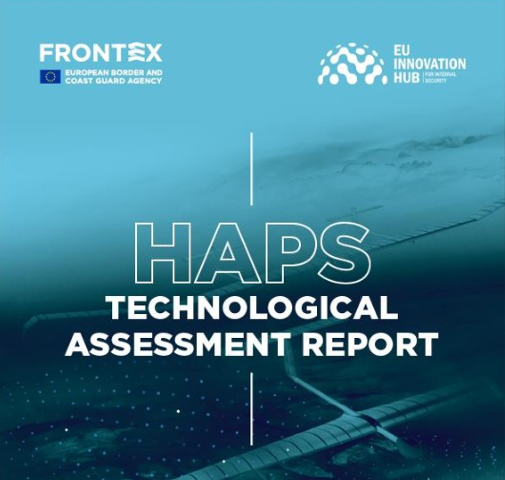Frontex has just released a nine-month technological assessment report on the potential of high-altitude pseudo-satellites (HAPS) to enhance law-enforcement operations, border surveillance and communication.
Main findings of the report
The report looks at the technological readiness, assessing the technology of HAPS as such, but also its potential use to help tackle challenges faced by Frontex and other members of the EU Innovation Hub for Internal Security.
The authors of the report looked at particular case studies to see how HAPS can be used in such activities as earth observation, telecommunication and navigation, search and rescue missions, remote sensing and operations and provision of ad-hoc telecom and satellite navigation (GNSS).
The study includes the following elements:
- an overview of balloons and airships (LTA – lighter-than-air) and with fixed-wing aircraft (HTA – heavier-than-air);
- an analysis of individual HAPS technologies, including a comparison of the platforms, payload analysis, technological challenges, infrastructure demands, and regulatory barriers.
Conclusions
The study concluded that HAPS have a real potential within each of the three identified high level use cases linked to the activities of Frontex and other members of the EU Innovation Hub on Internal Security, entailing Earth Observation, Telecommunication, and Navigation . Whilst the level of research and development varies across the three use cases – as the navigation use case proved to be less of a driver for development compared to Earth observation and telecommunication – there is an extensive added value in leveraging HAPS for each of the three, and the insights collected during the study underlined the technological feasibility of HAPS.
Beyond the assessment of the potential and technological readiness of HAPS for the three high level use cases, five additional specific use cases were established. They were designed in close collaboration with Frontex and the EU Innovation Hub on Internal security, in order to be able to assess the potential of HAPS through the lens of relevant operational activities. The five specific use cases included in the study entailed:
- Search & Rescue missions;
- (Cross-border) remote sensing/observation, monitoring of points of interest;
- Remote vehicle/UAS/IoT operations;
- Covert operations; and
- Provision of ad hoc back-up telecommunication network and GNSS.
The stratospheric environment represents enormous engineering challenges. However, the added value and market potential drive industrial – and in some cases institutional – actors to invest millions of euros in development of HAPS, opening the door to the stratosphere and opening up the possibility for the EU ecosystem related to internal security to leverage the technology, as it can provide a clear added value in all assessed high level and specific use case.
Innovation hub platform
The project is carried out under the EU Innovation Hub for Internal Security, a cross-sectorial EU platform which ensures collaboration between internal security innovation actors, formed by the EU Justice and Home Affairs agencies, European Commission, the Council General Secretariat and the EU Counter Terrorism Coordinator.
Download the report here
For more information visit:




